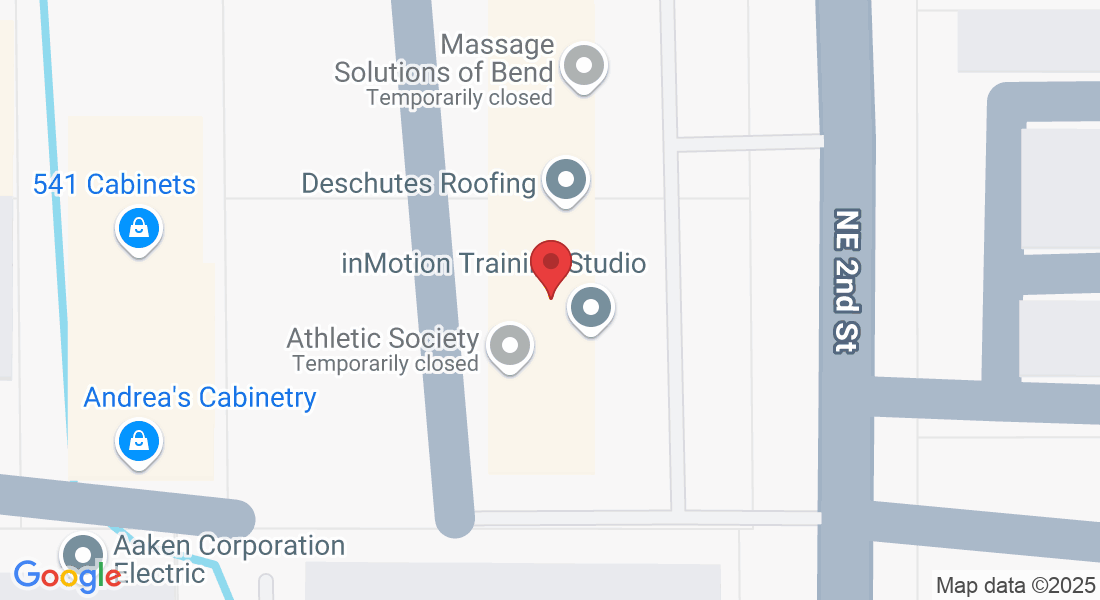blog | inmotion training studio

Legumes- Do you feel bloated after eating beans?
Humans are fascinatingly unique. Despite our inherent ability to sense what foods benefit us, we often let others dictate our dietary choices. We allow other people to tell us what to eat instead of understanding intuitively what we should eat.
Animals naturally know what to eat—why don't we?
Credentials aside, no one can definitively tell you or me what to eat. Each of us is unique, largely due to our gut microbiome, which is as individual as our fingerprints.
It surprises me how quickly people adopt dietary theories that exclude entire food groups, such as grains, legumes, or the FODMAPs diet, and the lectin theory, among others.
These theories often dismiss foods supported by extensive research. I could debunk each theory, but I'll get to the point.
Food-related issues usually stem from gut problems, not the food itself. Eliminating foods without addressing gut health is not a sustainable path to good health.
Let's focus on legumes. While I'm not the biggest fan unless smothered in butter or lard or mixed with olive oil to make hummus, they are nutritional powerhouses and deserve recognition. If I, someone who doesn’t crave them, can acknowledge their benefits, they must be truly significant.
Below, you'll find my recipe for fermented hummus. The hummus isn't fermented, but the chickpeas are. This simple technique can alleviate digestive issues with legumes, making them easier to digest, more nutrient-dense, and rich in beneficial bacteria—benefits absent in non-fermented legumes.
Consider the extensive benefits of legumes:
Plant-based protein: A great meat alternative.
Fiber content: Both soluble and insoluble, aiding digestion and regularity.
Rich in nutrients: Folate, iron, magnesium, potassium, and B vitamins.
Cholesterol reduction: Soluble fiber helps lower LDL cholesterol.
Blood pressure regulation: Potassium and magnesium.
Low glycemic index: Beneficial for managing diabetes.
Improved insulin sensitivity: Due to fiber and protein.
Weight management: High fiber and protein promote fullness and reduce calorie intake.
Constipation prevention: Insoluble fiber adds bulk to stool.
Antioxidants: Protect cells and reduce cancer risk.
Anti-inflammatory properties: Phytochemicals reduce chronic disease risk.
Bone health: Calcium and magnesium support strong bones and prevent osteoporosis.
Affordability and versatility: Suitable for various dishes, making them easy to include in diverse diets.
And the top benefit?
Prebiotic properties: Legumes nourish beneficial gut bacteria, promoting a healthy microbiome essential for overall health.
So, why avoid legumes?
The primary concern is gas and bloating caused by oligosaccharides (complex carbohydrates) in legumes and other foods. These are prebiotics that promote good gut bacteria but can cause discomfort if the gut lacks the right bacteria to digest them.
This minor issue has led "experts" to advocate avoiding legumes. They often overlook that the problem lies with the gut, not the food.
Digestive issues with legumes indicate a lack of enzymes or beneficial bacteria needed for proper digestion. Removing them only exacerbates the problem.
If it's a gut issue, not a legume issue, simple solutions can make legumes easier to digest and enhance their nutritional benefits.
As you read, consider this: these are straightforward solutions—why not address the digestive issue directly?
Simple Solution 1: Ferment the Legumes

I don’t like to cook legumes. I prefer to buy organic, cooked legumes and ferment them. Canned legumes tend to be slightly undercooked. Cooking is supposed to break down oligosaccharides which are generally considered to be the cause of the gas.
Oligosaccharides are prebiotic so we need to know more to understand what state of cooking is ideal. In the meantime, we can ferment the legumes, to help break down these prebiotics, which means that the bacteria produced in the fermentation process can help break them down and improve digestibility. This also provides beneficial bacteria to help the gut.
This is easy to do – you just need to plan to have them ready when needed. And the result does not change the flavor or texture in any significant way.
Equipment Needed
1 litre or quart Mason jar with life
Measuring cup or measuring spoons
Sieve or strainer for draining the chickpeas
Can opener
Food processor
Container with lid
To Ferment The Legumes:
1 can cooked, legumes of choice such as chickpeas, black beans, aduki beans. They should be salt-free, drained, and rinsed
1 tsp sea salt
2-3 tbsp apple cider vinegar
2 cups spring water
1 liter (or quart) Mason jar with lid
Place the chickpeas in the mason jar and add enough water to completely submerge the chickpeas. Be sure to leave at least one inch of space at the top of the jar. Add the apple cider vinegar and sea salt. Mix with a rubber or silicon spatula or wooden spoon. Place the lid on the jar and screw on tightly so air cannot get in. Let the legumes ferment for two weeks.
For the first three days, turn the jar upside down twice daily to ensure the chickpeas remain submerged in the brine until gas builds up in the jar. Some legumes may float to the surface, making them susceptible to mold. However, once a vacuum forms in the jar, mold and pathogenic bacteria cannot grow. The first bacteria to grow is leuconostoc mesenteroides, which naturally grows on the skins of fruits and vegetables. During the fermentation process, it produces carbon dioxide, which builds up in the jar and creates a vacuum.
Once they are fermented, drain and rinse. It can now be used in recipes as you would normally use them. If not used right away, don’t drain or rinse. Just store them in the refrigerator to use as needed.

Simple Solution 2: Cook Seaweed with Legumes
Cooking legumes with seaweed is a traditional Japanese technique that can help reduce the gas-producing effects. Seaweed, such as kombu, wakame, and nori contains enzymes that break down the oligosaccharides, which are often responsible for causing gas and bloating.
Kombu seaweed contains enzymes like alpha-galactosidase, which helps break down oligosaccharides into simpler sugars that are easier to digest. This reduces the amounts of undigested sugars reaching the large intestine, where they would otherwise ferment and produce gas.
Seaweed is also rich in minerals, particularly potassium, which can help balance the sodium levels in legumes and make them easier to digest.
Before cooking, soak the 1 cup of dried legumes in water with a piece of kombu seaweed (about 1-2 inches) for several hours or overnight. This can help start the breakdown of oligosaccharides.
Add another piece of kombu seaweed (about 1-2 inches) to the pot while cooking the legumes. The kombu can be removed after cooking, or chopped and included in the dish for added nutrients.
Rinse thoroughly to remove some of the oligosaccharides.
Tip 1: Gradually introduce legumes into your diet to give your digestive system time to adjust.
Tip 2: Chew Well: Chewing legumes thoroughly can also aid in digestion and reduce gas.
Fermented Hummus
1 can cooked, chickpeas, salt-free, drained and rinsed, and fermented for two weeks
1/2 cup tahini (sesame taste)
1/4 - 1/3 cup olive oil
1 tsp cumin or paprika (more can be added if desired)
2 tsp raw honey
1/4 - 1/3 cup lemon juice or apple cider vinegar (add and adjust to taste)
Sea salt and black pepper to taste
Extra spring water if needed to make it smoother
Place the chickpeas, tahini, olive oil cumin or paprika, and honey in a food processor and process until smooth. Add lemon juice to taste and to aid in making the hummus smooth. Extra olive oil or water can be added to make the hummus smoother and give it the texture you like best. Season with sea salt and pepper to taste. It is now ready to use. If not used right away, place the hummus in a container with a lid and store it in the refrigerator. It will be kept for 5-7 days. It can also be stored in the freezer if it is not going to be consumed within the week.
Let me know how this works for you... comment or tag us on instagram!
In motion training studio - bend
social media
REQUEST MORE INFORMATION
change you can do & results you will see








